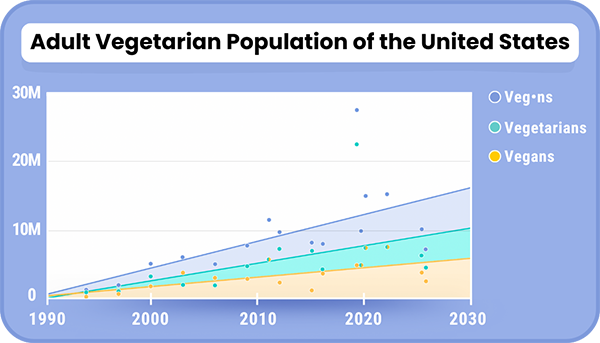See why so many people are going vegan
Many of the nation’s most routine animal farming practices would be illegal if perpetrated against cats and dogs.
Putting speciesism on our radar
In his groundbreaking book, Animal Liberation, philosophy professor Peter Singer popularized the word speciesism. He wrote:
Racists violate the principle of equality by giving greater weight to the interests of members of their own race when there is a clash between their interests and the interests of those of another race. Sexists violate the principle of equality by favoring the interests of their own sex. Similarly, speciesists allow the interests of their own species to override the greater interests of members of other species. The pattern is identical in each case…
If a being suffers there can be no moral justification for refusing to take that suffering into consideration.
Opposing speciesism doesn’t mean treating all species the same in all situations—rather, it means not using an individual’s species as the basis for harming or protecting them. If it’s wrong to kill a dog for food, then it’s also wrong to kill a chicken or pig, as there are no significant differences in their desire to avoid fear and death.

The question is not, ‘Can they reason?’ nor, ‘Can they talk?’ but, ‘Can they suffer?’
The animals we eat
We love dogs and cats. But farmed animals such as cows, pigs, and chickens are seen as objects to be turned into food. This is one of the most pervasive forms of speciesism.
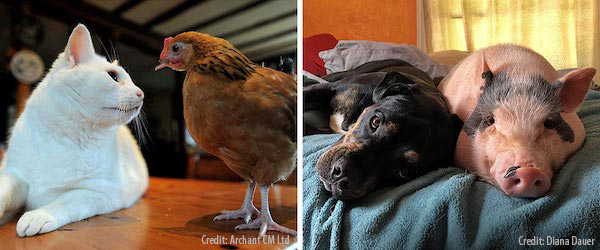
In the September 1976 issue of the trade journal Hog Farm Management, John Byrnes recommended, “Forget the pig is an animal. Treat him just like a machine in a factory.” The hog industry went on to do just that, illustrated 30 years later by a National Pork Producers Council spokesperson saying, “So our animals can’t turn around for the 2.5 years that they are in the stalls producing piglets. I don’t know who asked the sow if she wanted to turn around.”
Farmed animals live sad lives—normally in dark warehouses that you wouldn’t even recognize as farms. They can’t breathe fresh air, and they live on concrete or wire that damages their feet. When it comes time to be slaughtered, they’re packed onto trucks, exposed to the freezing cold, rain, or intense heat for hours or even days. They’re killed at just a fraction of their normal lifespan.
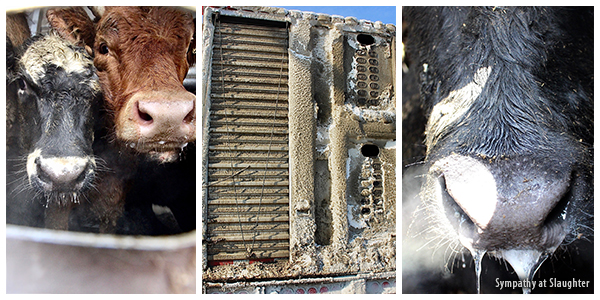
Slaughterhouses
It’s hard to comprehend how horrible slaughterhouses are—both for animals and humans—without visiting one.
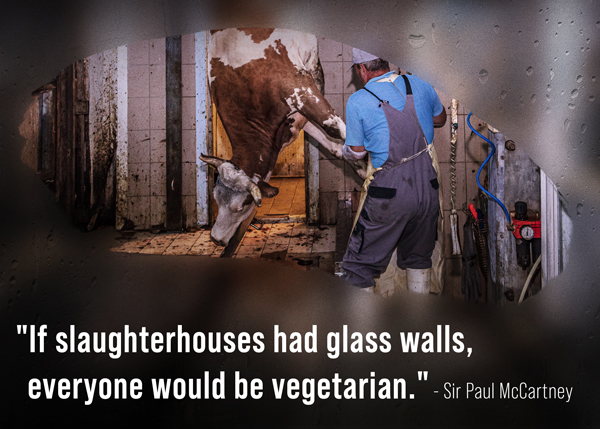
To make the most profit, killing and disassembling animals must move quickly and many animals end up being conscious through much of the process. Cows can have their hooves cut off and hides ripped off before they’re finished dying. Pigs often enter the scalding tank while still alive.
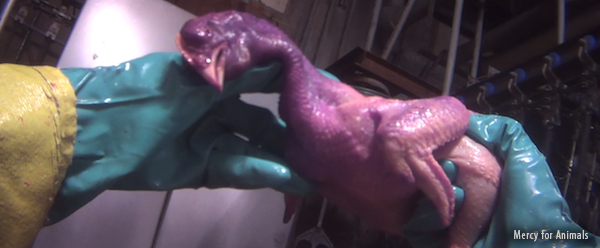
Many chickens and turkeys are also alive as they enter the scalding tanks—meant to loosen their feathers. These birds can be identified because their flesh turns bright red as they drown in the scalding water.
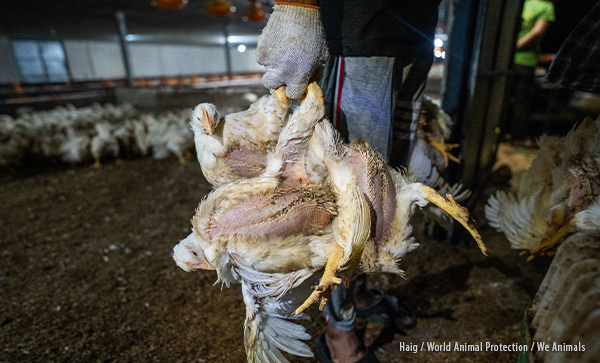
Dairy and eggs
The bodies of dairy cows and egg-laying hens are pushed to produce many times more milk and eggs than is natural. When their production decreases, at a relatively young age, they’re slaughtered.
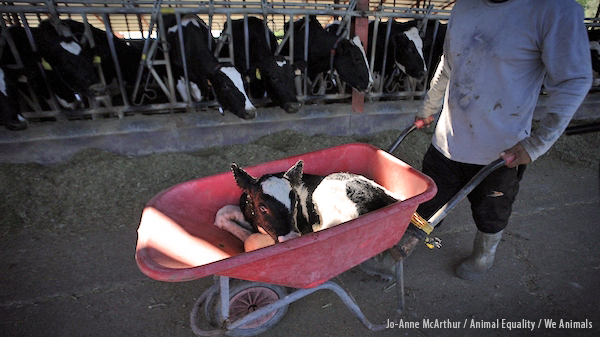
In order to produce profitable amounts of milk, a cow must be impregnated on a yearly basis. While the bond between mother and calf is one of the strongest in nature, dairy calves are taken away within hours of birth—they won’t be together again. Some calves will be slaughtered within days or weeks for veal.
Undercover investigations show that cage-free eggs rarely come from happy hens.
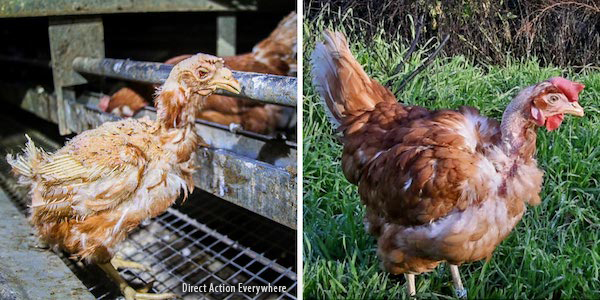
Male chicks in the egg industry are killed at birth, often ground up alive in macerators.
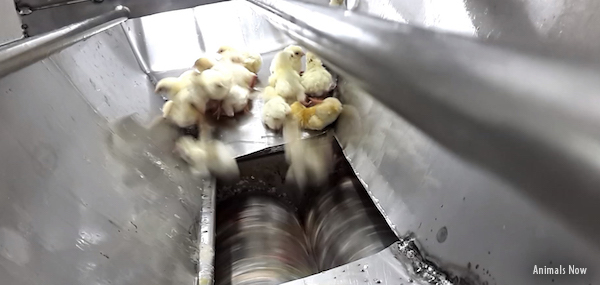
Workers treated “like animals”
This brutal system also treats slaughterhouse workers more as objects to be discarded than as human beings.
National Public Radio’s 2016 exposé, Working The Chain, Slaughterhouse Workers Face Lifelong Injuries, describes how each worker must do thousands of repetitions per day with few breaks, causing a wide range of muscle and nerve injuries. They make low wages and are fired when their injuries prevent them from working.
Worker advocate Gloria Sarmiento says, “The speed of the line is really fast. The supervisors are yelling all the time…They are treating us like animals.”
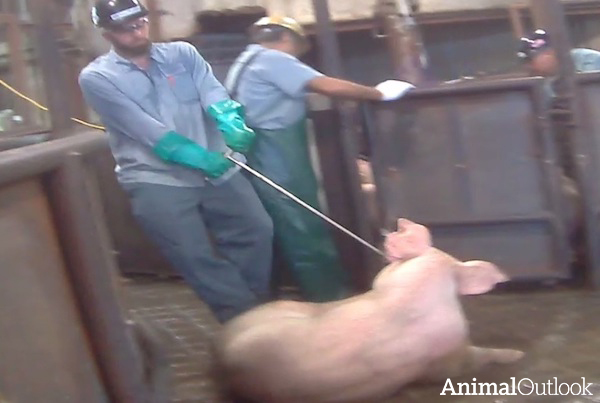
Slaughterhouse workers perform a job—killing innocent animals—that few meat-eaters are willing to do. A steady flow of investigations shows that terrible working conditions take a toll on the workers who will sometimes act out cruelly toward the animals. It’s a vicious cycle of abuse.
Ag-gag
Dozens of undercover investigations have exposed the abuse of farmed animals and the industry has responded by trying to punish whistleblowers. At the industry’s prodding, some states have passed Ag-Gag laws that criminalize exposing abuse.
Environmental impacts
Did you know animal agriculture is one of the most significant contributors to human-made greenhouse gas emissions, water pollution, and deforestation? With so many plant alternatives available, making choices that help the environment is easier than ever.

Take, for example, the vegan Beyond Meat Burger. A quarter-pound Beyond Burger is nearly identical nutritionally to a quarter-pound beef burger but generates 90% less greenhouse gas emissions, requires 46% less energy and 99.5% less water, and uses 93% less land compared to the production, packaging, and distribution of United States beef (Heller and Keoleian, University of Michigan, 2018).
Going vegan can drastically reduce your greenhouse gas emissions!
Changing to a vegan diet could reduce global agricultural emissions by 84% to 86%. The reduction in air pollution would prevent approximately 236,000 premature deaths per year (Springmann et al., Nature Communications, 2023). If people switched to eating vegan, the land that could be reforested could store the amount of carbon needed to limit global warming to the critical amount of 1.5°C (Hayek et al., Nature Sustainability, 2021).
Eating locally does little to change the impact of foods. Greenhouse gas (GHG) emissions from transportation make up a very small amount of the emissions from food, and what you eat is far more important than where your food traveled from (Ritchie H, Our World in Data, 2020).
Going vegan can drastically reduce your land use!
An amount of land that can produce 100 grams of protein from plants can produce only 60 grams of protein from eggs, 50 grams from chickens, 25 grams from dairy, 10 grams from pigs, and 4 grams from beef. Consequently, replacing all animal-based products with nutritionally comparable plant-based alternatives could feed 350 million additional people in the United States alone (Shepon et al., Proceedings of the National Academy of Sciences, 2018).
What about grass-fed beef?
You might have heard that grass-fed beef can help reduce greenhouse gas emissions. While it’s true that some grass-fed beef can have lower greenhouse gas emissions than feedlot beef, eating no beef at all has a substantially greater effect on reducing carbon in the atmosphere (Eshel et al., Proceedings of the National Academy of Sciences, 2025).
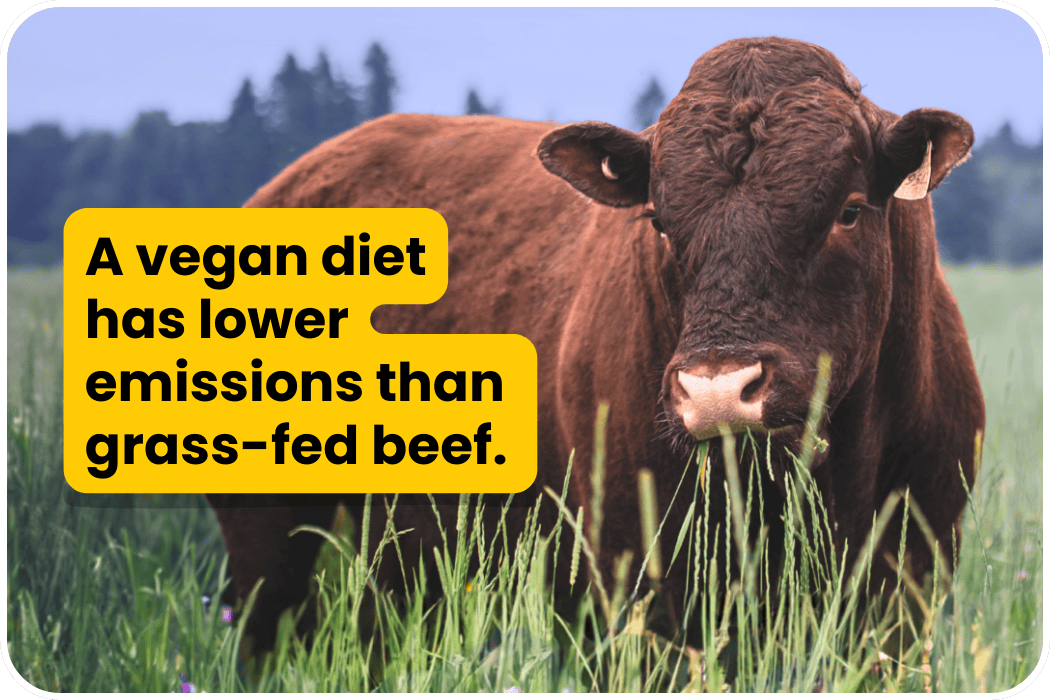
Animal agriculture is not a sustainable system. Going vegan will drastically reduce your environmental footprint!
For more in-depth information, read our article, Going vegan reduces your environmental impact.
Must we eat animals?
Although most societies have historically eaten animal products, we don’t need to. The vegan movement started in the 1940s, and since then, countless children have been raised vegan and grown into healthy adults.
For optimal health, current and aspiring vegans should be well-informed about nutrition. Vegans have lower rates of type 2 diabetes (Tonstad, 2013, Papier, 2019), high blood pressure (Fraser, 2009, Appleby, 2002), cancer (Fraser, 2025, Key, 2014), and high cholesterol (Bradbury, 2014).
All plant foods contain all the essential amino acids—the building blocks of protein. To meet protein requirements and to feel satisfied, it’s important to make sure you’re eating some high-protein plant foods each day. The easiest choices are vegan meats, which are packed with protein. Legumes—peanuts, beans, lentils, and peas—and foods made from them are also high in protein.
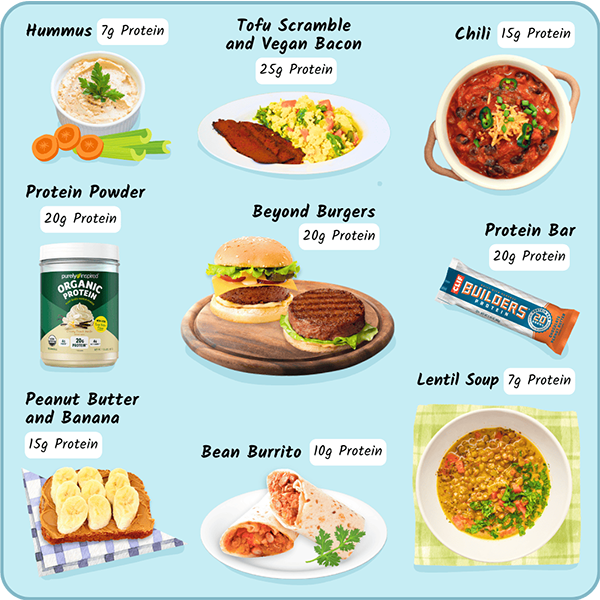
Soyfoods—like tofu, tempeh, and soymilk—are high in protein. The meat industry has sensed a threat from soy and promotes anti-soy propaganda, but don’t be fooled—all legitimate scientific bodies consider soy safe. That said, it’s no problem to be vegan without eating soy—there are many alternatives!
Several nutrients warrant attention in vegan diets. See Nutrition Tips for Vegans for all the essential information.
Meat: Manly or murder?
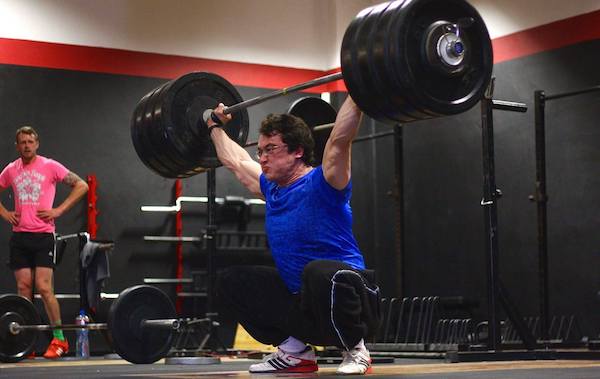
Going vegan is the best way to join the movement to oppose speciesism. A weight is lifted from my shoulders knowing I don’t pay people to kill animals.
Eating meat is often portrayed as being manly, and meat is promoted to men to build muscles. But there is a potential downside to eating large amounts of meat to build muscle. Research among Seventh-day Adventist vegetarians found that male vegetarians had a 38% lower risk of coronary heart disease which was likely due to the beef intake of the meat eaters in the study (Fraser, 1999). Meat and the meat industry are no friends to men!
The growing number of successful vegan bodybuilders, weightlifters, and other athletes show you don’t need animal products to build muscle.

As a vegan athlete for 20 years, I know firsthand you don’t have to compromise ethics to build muscle. The strength I’m most proud of showcasing is that of compassion.
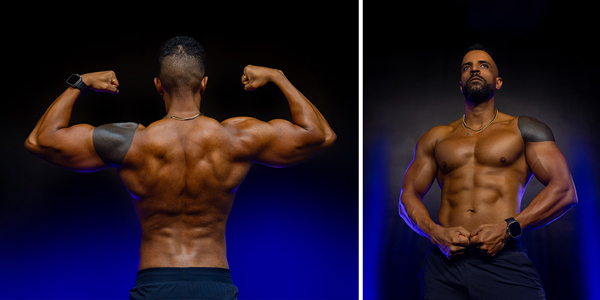
As a bodybuilder of two decades, I’ve found it easier to get protein, make gains, and feel better by eating plant foods. Real strength comes from defending the innocent animals that deserve the simple respect to not be abused.
Grilling out is often associated with manliness. Never fear, there are a wide range of delicious, high-protein vegan burgers and dogs available from Beyond Meat, Tofurky, Gardein, Field Roast, and others at most grocery stores.
Taking a stand
By eating vegan—not consuming meat, dairy, and eggs—you can oppose speciesism and the human rights violations of animal agriculture.
While it can sound intimidating at first, if you experiment with the multitude of satisfying, high-protein vegan foods and ease into it at your own pace, it will soon be second nature.
Don’t sweat the small stuff!
It’s not necessarily best to make a sudden, abrupt change in the way you eat. Rather, incorporate new habits at your own pace.
Don’t worry about avoiding hidden animal ingredients.
As society moves away from using animals, these byproducts will disappear. Try avoiding obvious animal products like chicken’s legs and cow’s milk without stressing about hidden ingredients.
But don’t switch to eating smaller animals.
There’s no doubt that birds can suffer. There’s scientific evidence that fish feel pain and can recognize themselves in a mirror, indicating self-awareness. Because it takes more small animals to feed someone, it makes the most sense not to switch to eating smaller animals, but rather to cut back on all animal products at a pace you find sustainable.
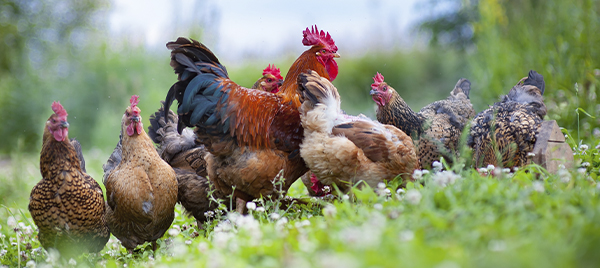
[C]hickens are not mindless, simple automata but are complex behaviorally, do quite well in learning, show a rich social organization, and have a diverse repertoire of calls. Anyone who has kept barnyard chickens also recognizes their significant differences in personality.
Join us!

According to polls commissioned by the Vegetarian Resource Group, there are about 3 million adult vegans in the United States, up from half a million in the mid-1990s.
Our numbers are growing, but most people still eat meat out of convenience. While it’s easier to go with the flow, stronger people take a stand for what they believe in—especially taking the side of those being exploited and abused.
By joining the growing movement of people who oppose speciesism, you’ll reduce the demand for killing animals. As more people join in, we’ll reach a tipping point at which millions of animals will be spared.
You can help
Combating speciesism means not supporting the violence inflicted on farmed animals—by cutting back and eventually eliminating animal products, you can help put an end to speciesism!
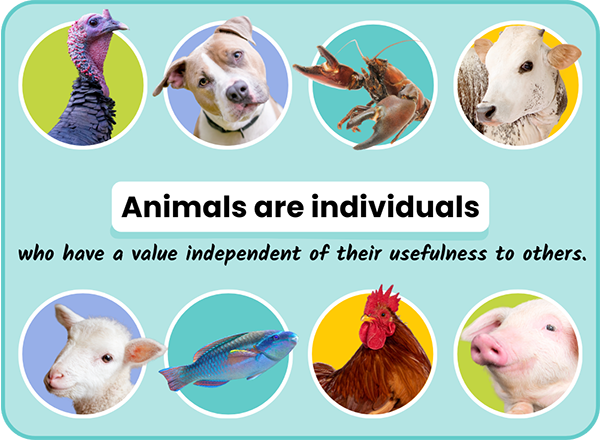
I think everybody has that capacity to stop and think and say, ‘If I knew you, I wouldn’t eat you.’ And in some ways, it really is that simple.
Community support
If you want to succeed, it helps to connect with others. There are likely vegan groups in your area who hold social events at local restaurants—check on Facebook and Meetup.com.
10 Weeks to Vegan is a free challenge that makes vegan eating a little easier and a lot more fun! It will provide you with tips and recipes via email, along with an invitation to our Facebook group—a welcoming community of others in the challenge. Sign up today!
References
Shepon A, Eshel G, Noor E, Milo R. The opportunity cost of animal based diets exceeds all food losses. Proceedings of the National Academy of Sciences. 2018 Apr 10;115(15):3804-9. The protein produced on the same amount of land for different foods comes from Figure 3.
